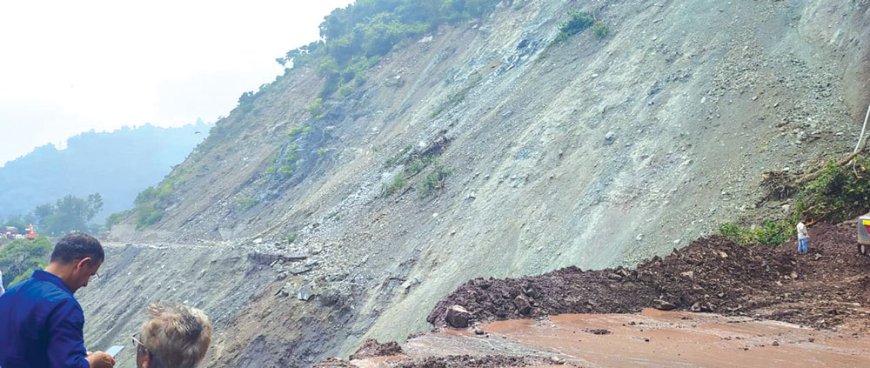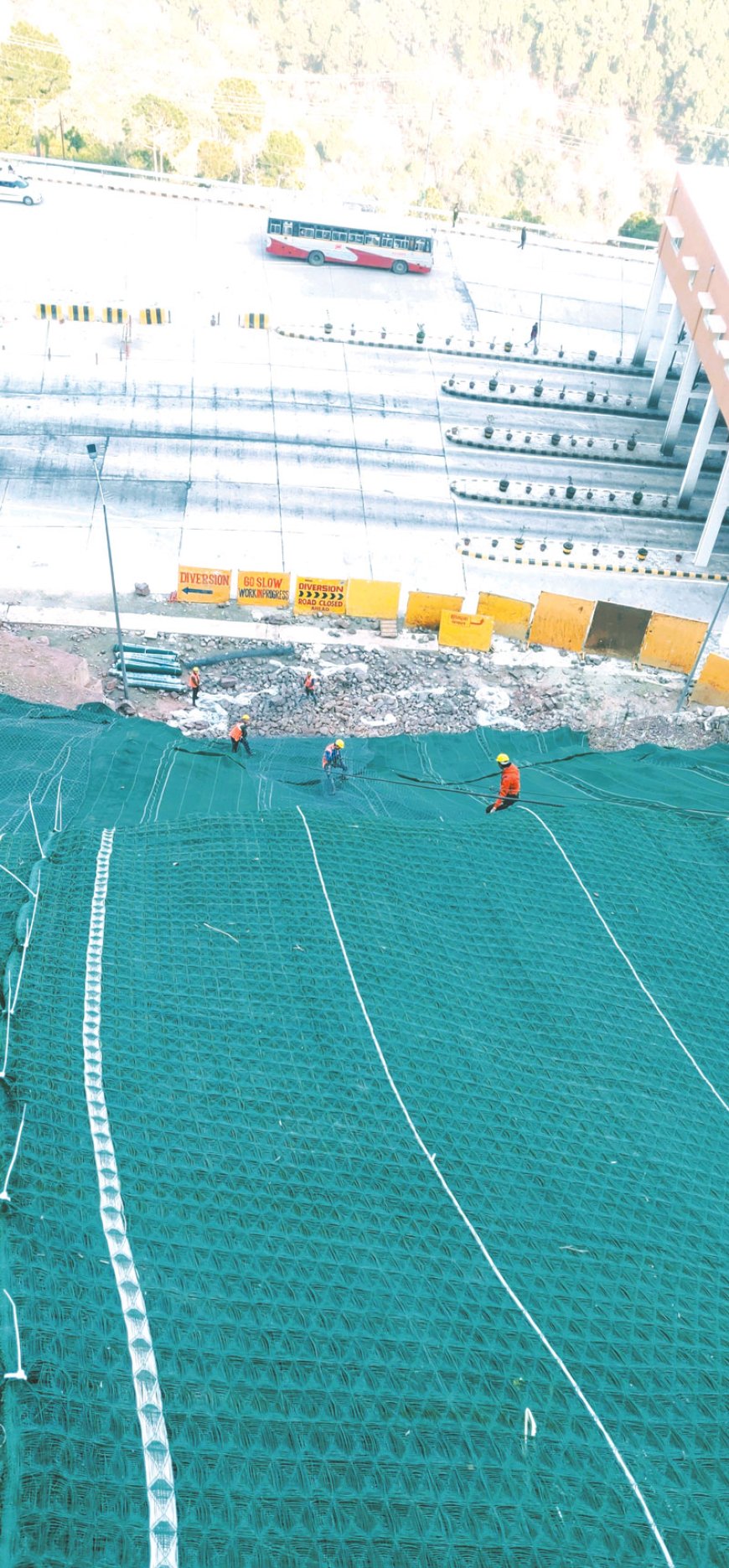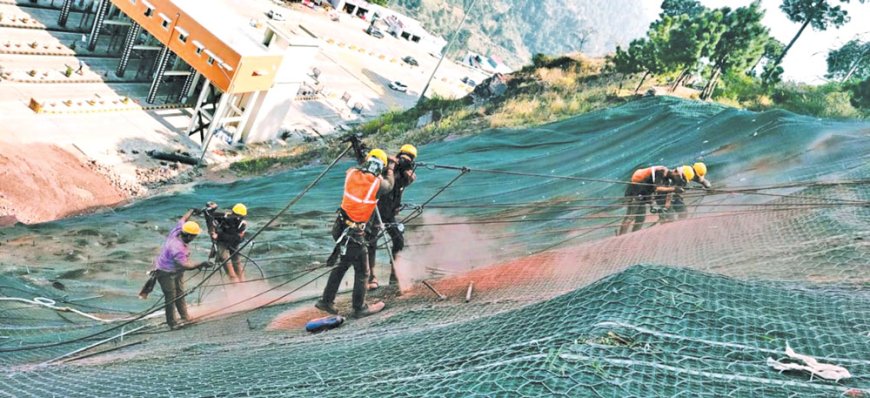An account of remarkable workmanship on the hill roads of Himachal Pradesh

To evaluate the effectiveness and reliability of slope protection technology, real tests in natural hazard scenarios are necessary. The recent heavy rainfall and cloud bursts in Himachal Pradesh posed a serious threat to the stability of the slopes and embankments. However, thanks to the advanced slope protection technology implemented by our team at Garware Technical Fibers Ltd, we were able to prevent any major damage or erosion. The successful performance of our technology demonstrates its reliability and suitability for various slope protection applications.

The project involved stabilization of the slope at the Sanwara Toll, Solan, at Chandigarh-Shimla National Highway (NH-05), where the terrain is steep and complex. There is a stadium on the crest of the slope which made the area even more critical and demanding. The main challenges to be addressed were the risk of erosion and landslides due to incessant rains, presence of weak soil which made the situation even worse.
The cut slope height varied from a minimum of 25 m height to a maximum of 42 m height. The angle of the slope varied along the stretch from 45 to 80 degrees. As per the geotechnical investigation report, cut slope soil strata in this stretch is completely weathered rock/soil and is severely vulnerable to surface erosion during monsoon season. Also, pockets of rock boulders are observed in some stretches adding to the surficial instabilities of the slope.
The project with almost 4,000 sq m of slope stabilization was completed within the budget and quick schedule of 3.5 months, with the desired performance criteria. The slope stability analysis and design ensured that the slope was safe and stable for the intended service life.

The erosion control slope mitigation measures implemented by GTFL has proven to be successful after the recent severe rain and cloudburst events in Solan and other parts of Himachal Pradesh. The stability measures consisted of installing Turf Reinforcement Mat (TRM®), double twisted mesh, and self-drilling anchors along the slope to prevent soil erosion and stabilize the slope. The measures were designed according to the site conditions and the best practices in the industry. The mitigation measure was inspected and monitored before, during, and after the rain events to ensure its effectiveness and safety. The inspection results showed that the measures performed well and no signs of erosion or slope failure were observed and also enhanced the aesthetic and environmental value of the site by providing vegetation cover. We are proud of our work which could only be achieved by skillful execution and workmanship.

Slope stability projects are important for preventing landslides and ensuring the safety of people and infrastructure. However, these projects can be expensive and complex, requiring careful planning, design, and execution. Some authorities may be tempted to cut costs by choosing cheaper materials, methods, or contractors, but this can only have negative consequences on the performance and reliability of the slope stability solutions. Cheap materials can affect the performance on slope stability projects by reducing their quality, efficiency, and longevity. This can expose the clients to potential liabilities, damages, or losses in the future.
To avoid these problems, it is important to invest in quality and expertise for slope stability projects. Quality and expertise can ensure that the slope stability solutions are designed and implemented according to the highest standards and specifications. Quality and expertise can also provide better value for money, as they can reduce the maintenance and repair costs of the slope stability solutions over time.

Lopamudra Dutta
Senior Manager,
Garware Technical Fibres Ltd












